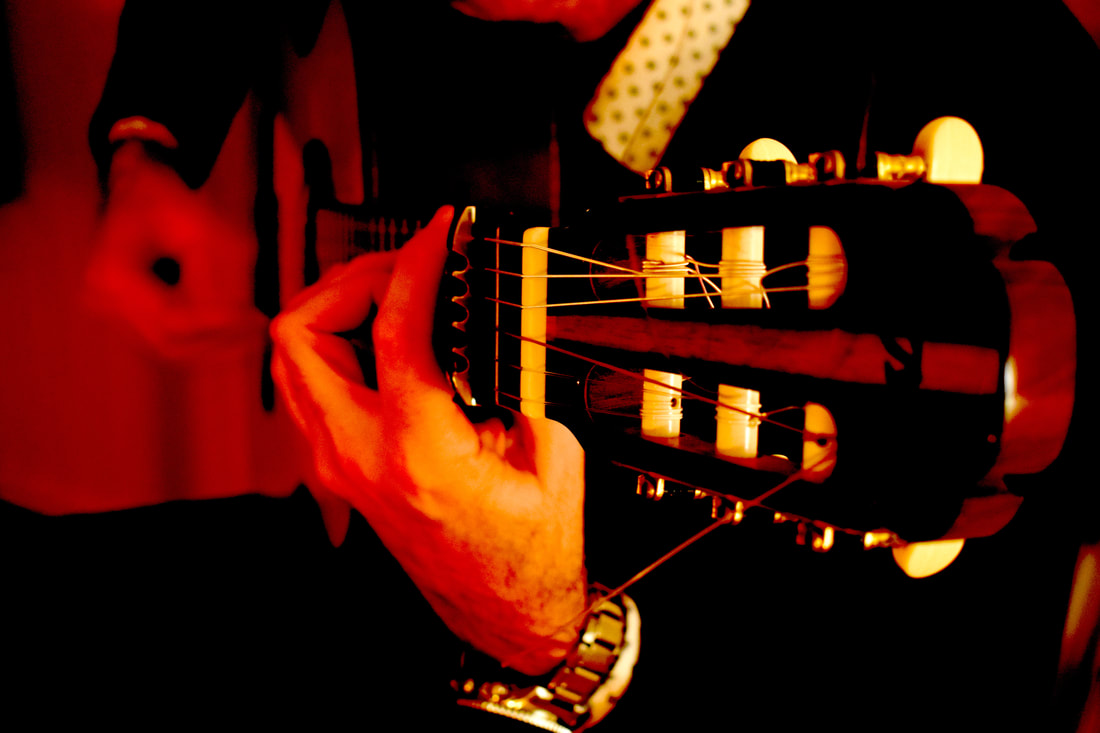Summary: Flamenco guitar has its roots in the Andalusian region of southern Spain, dating back several centuries (at least as far as we can document). It developed alongside the traditional Flamenco music, a passionate and emotional genre that incorporates singing (cante), dancing (baile), and guitar playing. The guitar's role in Flamenco is traditionally to accompany the singer and dancer.
Classical guitar in contrast has a history rooted in Western classical music traditions, tracing its lineage back to the Renaissance and Baroque eras. It is associated with composers like Fernando Sor, Francisco Tárrega, and Agustin Barrios Mangoré, who contributed significantly to its repertoire. Unlike Flamenco, Classical guitar is primarily a solo instrument, often used for interpreting complex compositions.
Flamenco Guitar: Techniques, Instruments and Styles
Flamenco guitarists often use distinctive techniques, for example the "rasgueado," characterized by rapid, percussive strumming patterns. Fingerstyle is also used, with players using their fingers to pluck the strings. The style emphasizes emotion, improvisation, and dramatic flair, with players often exploring a range of dynamics and moods within a single piece.
Traditional Flamenco guitars are designed to produce a bright and percussive tone, with a thinner top and lower action for easy string manipulation. Styles of flamenco include various forms such as the Soleá, Alegrias, and Bulerías, each with its own distinct rhythmic and harmonic patterns. Flamenco guitarists often compose their music or adapt traditional pieces, infusing their personality and passion into their performances.
Classical guitar on the other hand has a history rooted in Western classical music traditions, tracing its lineage back to the Renaissance and Baroque eras. It is associated with composers like Fernando Sor, Francisco Tárrega, and Agustin Barrios Mangoré, who contributed significantly to its repertoire. Unlike Flamenco, Classical guitar is primarily a solo instrument, often used for interpreting complex compositions.
Classical Guitar: Techniques, Instruments and Styles
Classical guitarists use fingerpicking techniques and often play with a precise, controlled touch. The style places a strong emphasis on interpreting written music with meticulous attention to dynamics, phrasing, and articulation. Classical guitar repertoire encompasses a wide range of musical periods, from Renaissance lute music to contemporary compositions, showcasing the instrument's versatility.
Repertoire and Guitar Selection
Classical guitars are characterized by their rich, warm tone, achieved through a larger body and lower string tension. The repertoire includes compositions by renowned composers like Bach, Isaac Albéniz, and Villa-Lobos, as well as contemporary works by modern guitarists. Classical guitarists often perform with sheet music, showcasing their interpretative skills and technical mastery of the instrument.
In the video above, Rafael (a flamenco guitar teacher) looks at the difference between these two instruments and styles:
Conclusion
Flamenco and Classical guitar represent two captivating facets of acoustic guitar music, each offering its own unique artistic journey. Flamenco guitar is a passionate and improvisational style deeply rooted in Spanish culture, while Classical guitar is a disciplined and precise discipline rooted in classical music traditions. Regardless of which path a guitarist chooses, both styles showcase the beauty and versatility of the acoustic guitar, and they continue to inspire musicians and audiences around the world with their distinct flavors of artistry and emotion. Ultimately, the choice between Flamenco and Classical guitar is a matter of personal passion and expression, reflecting the rich tapestry of the acoustic guitar's musical heritage.
Learn from a Master Who's Performed for Royalty: Start Your Flamenco Journey Today
- Unlock this article & video library for free
- Join thousands of guitarists who finally got past only 'knowing some basic chords'
- Learn flamenco from a lifelong performer & celebrity teacher from Madrid
- Rafael has taught EOB (Radiohead), Jack Peñate & played for HRH Elizabeth II (etc)
By entering your email you agree to receive email updates from Flamenco With Rafael. See our Privacy Policy.




